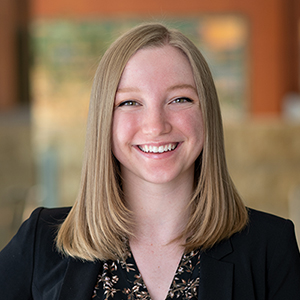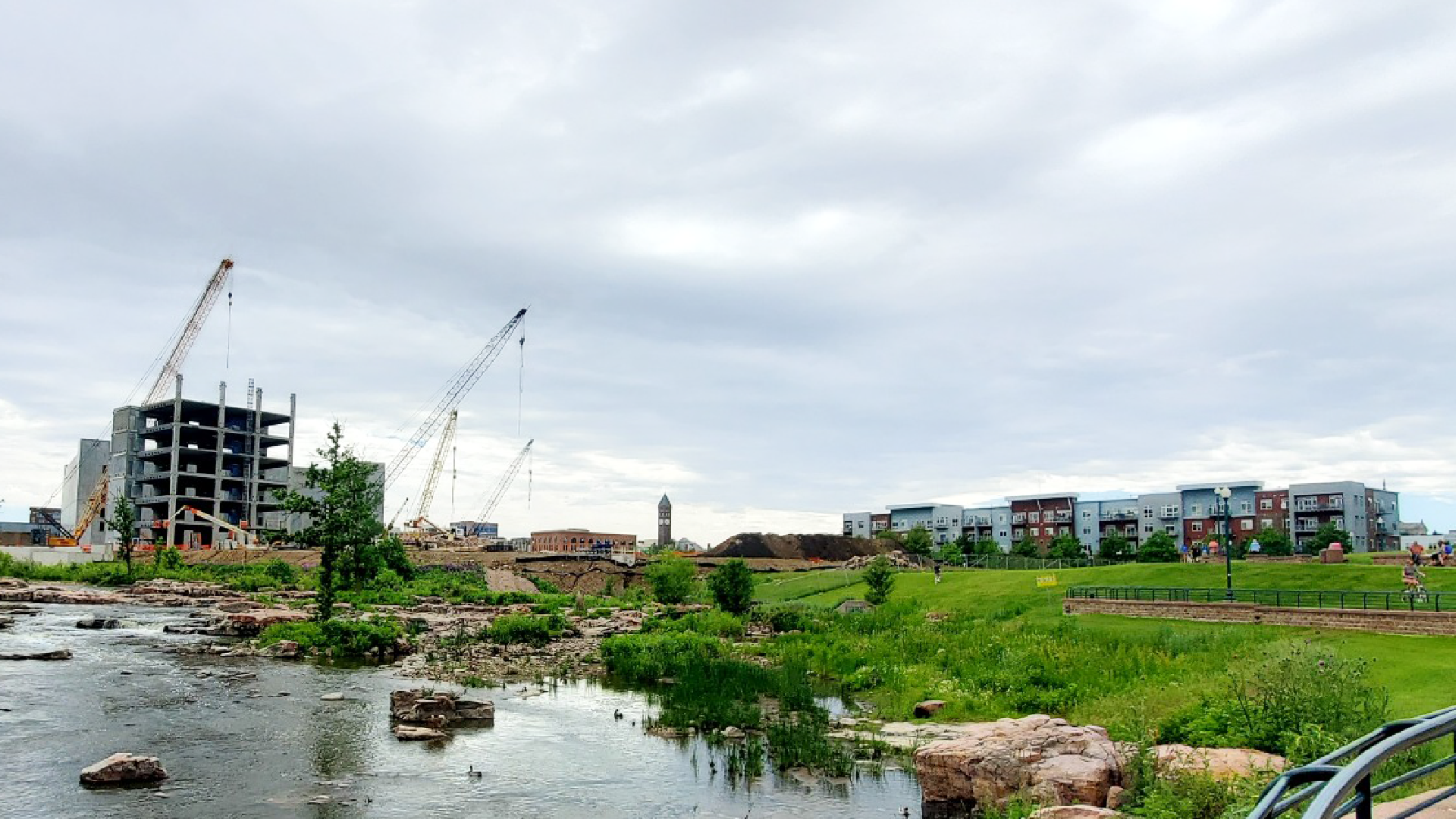If you drive around Sioux Falls, South Dakota, it’s hard to miss the apartment complexes sprouting up across all corners of the city.
Butch Warrington, chief building official for Sioux Falls, said the city has been having “incredible, just incredible numbers” of multifamily units permitted through July of this year.
While this year has been exceptional, multifamily construction has been flourishing in the city over the last several years.
Sioux Falls is not the only area to experience this multifamily bonanza. After nearly a decade of slow growth, most states in the Ninth District have seen residential construction surge, especially during the pandemic.
Total permitted housing units in the Ninth District have increased 35 percent from 2019 levels, according to data from the Census Bureau. While single-family construction has been healthy, the recent construction surge has mainly been driven by multifamily construction, which is a relatively new trend for the region.
Historically, new single-family homes have significantly outpaced the number of new multifamily units in the Ninth District. While there has still been more single-family than multifamily construction during the pandemic, a leap in multifamily growth over the last two years has closed most of that gap in the region.
Multifamily permits now make up nearly half of total housing permits issued in the district (Figure 1). That’s the highest share of multifamily permits issued according to data available since 1980.
Multifamily makes wide gains
Following the housing market crash in the mid-2000s, residential construction plummeted in the Ninth District and across much of the nation. In the years after, total units permitted increased at a turtle’s pace, with modest increases in single-family housing while multifamily construction remained largely stagnant.
Minnesota and Wisconsin were early leaders in the region’s multifamily permit surge. In Minnesota, the pace of new multifamily construction started picking up in 2014, and then hit another gear starting in 2018 (Figure 2). By 2021, annual multifamily units had grown almost 2 ½ times their level of just eight years earlier.
The Twin Cities are behind much of the surge, with multifamily permits consistently outpacing single-family permits in the metro area after 2017.
“We have this huge demographic of millennials who are often debt-burdened and delaying household formation, [and this is] increasing the demand for rentals,” according to Cecil Smith, president and CEO of Minnesota Multi Housing Association. “Since Minnesota has a major metropolitan area with good job growth prospects, the institutional capital [for multifamily construction] started coming here.”
Much of the early activity was in the core cities of Minneapolis and St. Paul—and continues today. Minneapolis has permitted almost 2,600 units through July, according to Housing First Minnesota.
But there is also activity happening in the suburbs now, said Smith. “Suburban markets had all this [multifamily housing] from the ‘80s and ‘90s that needed a refresh and new amenities. That's where the focus is now: Highly amenitized luxury product in the suburbs.”
In more rural states like Montana and South Dakota, multifamily growth was supercharged in 2020 after being largely stagnant over the previous decade.
Sioux Falls and Rapid City, South Dakota’s largest cities, have experienced record-breaking multifamily construction in the last two years. In 2021, Sioux Falls reported a 183-percent increase in the number of multifamily units from 2019 levels. This trend does not seem to be slowing, as the number of multifamily units permitted through July 2022 has already surpassed the total number of units in 2021.
Warrington, the chief building official for the city, hopes that the recent surge will boost the city’s low vacancy rate of 3.7 percent.
“We've issued 2,512 dwelling units for multifamily this year so far, so I would think we would start getting to the point where we see that vacancy rate go up a little bit next year when they become rentable. It'll be interesting what we’ll see in a year.”
Multifamily construction in Montana has also been strong of late, with new units more than doubling from 2019 to 2021. Single-family construction has been healthy but steadier in recent years. As a result, nearly 56 percent of all housing units permitted in Montana last year were multifamily, a level not reached since reporting began (Figure 3).
Much of this recent growth in Montana and South Dakota has coincided with substantial increases in net-migration to the states, which has residential construction racing to meet the new demand.
Cheryl Cohen, division administrator for Montana Housing at the Montana Department of Commerce, explained how the population surge has been a major factor in the recent growth in multifamily construction in the state.
“We experienced a net migration of just over 22,000 people from April of 2020 to July of 2021, which is pretty sizable,” said Cohen. “Builders responded to population growth and the associated market demand, and investors saw potential for good returns on investment by looking at the historically high rents here as well as low interest rates at the time.”
While much of the growth is happening in Montana’s largest cities, Cohen noted that there has been more interest in building in smaller towns outside the cities.
“We're seeing increased construction in a lot of communities like Belgrade, outside of Bozeman, or even smaller towns like Townsend that are just a little ways out from Helena,” added Cohen. “Since the immediate city center may be higher cost and less affordable, we're seeing that growth happening in the adjacent transitional communities.”
Despite surge, demand still outpaces supply
Although the recent surge in residential construction is impressive, it is still not enough to meet the high levels of demand in the region. Many parts of the Ninth District continue to feel the strains of nearly a decade of slower housing production as home prices and rent levels keep rising, particularly in areas seeing population growth like western Montana.
Home prices in Montana are currently up 48 percent from 2019 levels according to the Federal Housing Finance Agency’s House Price Index, which is the largest increase on record since reporting began. Rents are also leaping upward, putting pressure on residents of the state.
“We experienced a 37 percent rent increase in Lewis and Clark County from Q1 of 2020 to Q2 of 2022,” said Cohen at Montana Housing. “There were only four other counties across the entire country with a higher rent increase than that.”
The rent increases are exacerbating housing affordability in Montana, according to Cohen, who noted that one-quarter of Montana renters are extremely low income.
Minnesota has a similar problem, despite revving up residential construction earlier on than other states in the region. According to the Minnesota Housing Finance Agency, the state was still short about 54,000 units between the end of 2018 and the beginning of 2020.
“We've got to build housing two- to three-hundred units at a time, not two- or three-unit infill. That’s just not going to cut it,” said Smith with Minnesota Multi Housing Association. “We need housing built at a massive scale here.”
Construction remains strong amid heightened challenges
Through June 2022, total units permitted across the district continue to be strong, and multifamily units permitted are outpacing single-family permits so far according to preliminary Census Bureau data.
However, sustained challenges such as worker shortages in the construction industry, supply chain issues that lead to rising input prices, and recent interest rate increases may have a cooling effect on residential construction in the Ninth District throughout the rest of the year.
The Twin Cities are already seeing a bit of a slowdown in single-family construction as home prices and mortgage rates rise, tamping down the demand. However, a July report from Housing First Minnesota shows that multifamily construction is still forging ahead in the metro, seemingly undeterred for now.
Things aren’t slowing in Sioux Falls for multifamily construction yet either according to Warrington, who met recently with an architect for a new 150-unit apartment building.
“Things are still quite busy and active here,” said Warrington. “I thought I might start seeing things slow down, especially with interest rates rising, but I haven't seen it yet at all.”
Haley Chinander is an analyst and writer at the Federal Reserve Bank of Minneapolis. In her role, Haley tracks and reports on the Ninth District economy with a focus on labor markets and business conditions. Follow her on Twitter @haleychinander.






